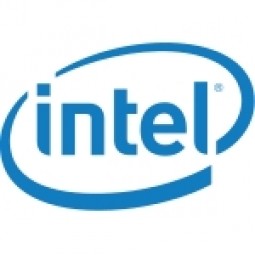
技术
- 分析与建模 - 机器学习
适用行业
- 电子产品
适用功能
- 销售与市场营销
客户
未公开
关于客户
英特尔处理器在所有类型的计算垂直领域的经销商。
挑战
英特尔的销售和营销部门致力于在新的行业细分市场发展时加强与经销商的沟通,并鼓励经销商参加网络研讨会或会议,以更好地了解英特尔为这些新市场提供的产品。因为销售和营销团队必须将他们的资源集中在那些最有可能产生销售的经销商身上,所以向正确的经销商发送正确的信息有助于提高销售渠道的价值。我们需要一个机器学习系统来帮助我们的销售和营销团队在英特尔庞大的经销商群中确定最佳前景。
解决方案
在英特尔,我们正在迅速将机器学习从学术追求转变为推动创新并为我们的业务带来竞争优势的驱动力。为此,英特尔 IT 开发了一种机器学习工具,可帮助英特尔的销售和营销部门确定哪些经销商最适合与特定垂直行业的客户建立联系。
机器学习算法帮助我们更多地了解我们的
通过对经销商进行分类,然后用另一种挖掘经销商网站内容的算法来补充这些信息。
收集的数据
Customer Satisfaction Score, Sales
运营影响

Case Study missing?
Start adding your own!
Register with your work email and create a new case study profile for your business.
相关案例.

Case Study
Remote Temperature Monitoring of Perishable Goods Saves Money
RMONI was facing temperature monitoring challenges in a cold chain business. A cold chain must be established and maintained to ensure goods have been properly refrigerated during every step of the process, making temperature monitoring a critical business function. Manual registration practice can be very costly, labor intensive and prone to mistakes.

Case Study
Cloud Solution for Energy Management Platform-Schneider Electric
Schneider Electric required a cloud solution for its energy management platform to manage high computational operations, which were essential for catering to client requirements. As the business involves storage and analysis of huge amounts of data, the company also needed a convenient and scalable storage solution to facilitate operations efficiently.

Case Study
Leveraging the IoT to Gain a Competitive Edge in International Competition
Many large manufacturers in and outside Japan are competing for larger market share in the same space, expecting a growing demand for projectors in the areas of entertainment, which requires glamor and strong visual performance as well as digital signage that can attract people’s attention. “It is becoming more and more difficult to differentiate ourselves with stand-alone hardware products,” says Kazuyuki Kitagawa, Director of Service & Support at Panasonic AVC Networks. “In order for Panasonic to grow market share and overall business, it is essential for us to develop solutions that deliver significant added value.” Panasonic believes projection failure and quality deterioration should never happen. This is what and has driven them to make their projectors IoT-enabled. More specifically, Panasonic has developed a system that collects data from projectors, visualizes detailed operational statuses, and predicts issues and address them before failure occurs. Their projectors are embedded with a variety of sensors that measure power supply, voltage, video input/ output signals, intake/exhaust air temperatures, cooling fan operations, and light bulb operating time. These sensors have been used to make the projector more intelligent, automatically suspending operation when the temperature rises excessively, and automatically switching light bulbs. Although this was a great first step, Panasonic projectors were still not equipped with any capability to send the data over a network.






